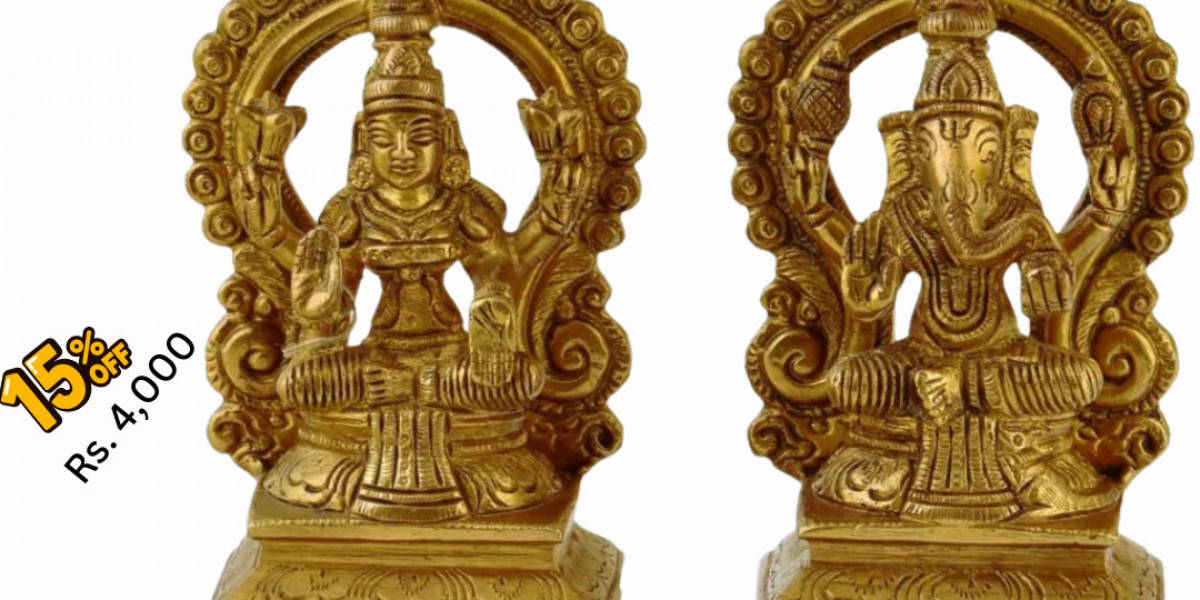When it comes to invoking prosperity and auspicious beginnings, few deities are as revered as Lord Ganesha and Goddess Laxmi. While most households in India are familiar with the common rituals performed during Diwali and special poojas, there exists a treasure trove of lesser-known customs that have been passed down through generations in different regions. These unique practices not only add depth to the spiritual experience but also offer fascinating insights into India’s rich cultural fabric.
Let’s explore some of these rare rituals and customs surrounding the worship of Ganesh-Laxmi murtis that you might not know!
1. The “Ek Dant Darshan” Before Laxmi Poojan
In some communities of Maharashtra and Karnataka, it’s believed that Goddess Laxmi should only be worshipped after one has first had a darshan (glimpse) of Ek Dant Ganesha – a form of Lord Ganesha with a single tusk. This ritual involves lighting a lamp in front of the Ganesha statue and reciting special mantras before proceeding to the Laxmi pooja.
2. South India’s Tradition of 'Kalash Sthapana' With Ganesh-Laxmi
In parts of Tamil Nadu and Andhra Pradesh, families install a brass Ganesh Laxmi idol inside a Kalash (sacred pot) filled with water, turmeric, and betel leaves. The belief is that this sanctified water, once blessed by the deities, becomes a powerful elixir that brings peace and prosperity when sprinkled across the home.
3. Midnight 'Arghya' Offering in Odisha
In rural Odisha, during special harvest festivals, devotees offer arghya (a sacred water offering) to the Laxmi and Ganesh murti exactly at midnight. This offering includes a mix of sugarcane juice, coconut water, and rice, symbolizing gratitude for wealth and removal of obstacles.
4. The ‘Bahi-Khata’ Ritual in Northern India
In states like Uttar Pradesh and Rajasthan, traders and businessmen worship their account books or bahi-khata during Diwali. A fresh Ganesh idol and Laxmi murti made of silver or brass are placed atop these books. The unique part? A small coin is tied in red cloth and placed between the idols, believed to bring in financial blessings for the new financial year.
5. Gujarat’s ‘Chopda Poojan’ With Handcrafted Idols
During Diwali, Gujarati families perform 'Chopda Poojan', where new accounting books and Ganesh Laxmi murtis are worshipped. Interestingly, they often use hand-painted or brass Ganesh Laxmi idols that are passed down through generations, making it not just a spiritual but also an emotional family tradition.
6. The “Twin Flame” Ritual in Nepal
In some regions of Nepal, devotees place two Ganesh idols alongside one Laxmi murti, symbolizing dual energies – wisdom and action – working in harmony with wealth. The prayer here focuses on balancing intellect with prosperity, creating a holistic space for growth and spiritual abundance.
Why These Customs Matter Today
In a world that’s constantly rushing forward, these rare rituals ground us. Whether it's placing a Ganesha statue in your living room or gifting a brass Ganesh Laxmi idol to a newlywed couple, these customs reflect our enduring reverence for divine energy and tradition. They remind us that spirituality is as much about ritual as it is about meaning – and sometimes, it’s the lesser-known paths that hold the most charm.
So this festive season, as you bring home your Laxmi and Ganesh murti, perhaps take a moment to explore and adopt one of these rare customs. You never know which one might become a beloved tradition in your family, too.
Whether you're looking for a beautifully detailed Ganesh idol for daily prayer or a timeless brass Ganesh Laxmi idol for your festive altar, discover our curated collection that honours tradition, elegance, and spiritual craftsmanship.









